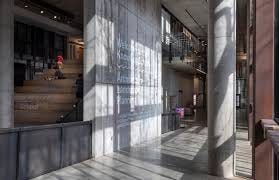The Odd Ones Out: Repositioning Planning at Knowlton
Planners at Knowlton find themselves sealed off from their counterparts in the architecture and landscape sections. How do we make Knowlton a more inclusive environment for planning students?
Whenever I tell people outside of Knowlton that I major in City and Regional Planning, most people follow up with some variation of “what is that?”. Normally I’ll stumble over my words as I attempt to explain what planning is, before giving up and saying it’s under the architecture umbrella. But I don’t think that this is very useful information. Yes, Ohio State’s City and Regional Planning program is a part of the Knowlton School of Architecture, which is in turn a part of the College of Engineering. But what does planning have to do with architecture, or even engineering?
Heading into my final year of the program, I’m still not entirely sure. Planning students have little interaction with architects and landscape architects. There have not been to my knowledge any classes or studios that combine planning with the other two disciplines. The only real design work planners are taught to do in the program is creating InDesign templates. The City and Regional Planning “Studio” is a glorified computer lab on the 4th floor, placed behind hermetically sealed doors and conspicuously removed from the open-air architecture and landscape architecture studios on the third floor.
All of this begs the question: Why is City and Regional Planning under the umbrella of architecture and not say the John Glenn School of Public Affairs? The program as it exists now seems more oriented towards public policy and local government. The work we do in planning studios is valuable, and often has real life impacts on the communities we work with, but they often involve little to no site planning. Students are basically employed as policy analysts and consultants, putting together detailed plans and documents for local governments so that they don’t have to hire consultants to do the work for them. I’m not complaining about this model of free labor, I do think it gives us as planners a unique opportunity to tangible planning work while in school. But it is not a studio in the same sense as an architecture or landscape architecture studio. Planning studios don’t allow for students to be as creative in their work, as they must meet the needs of an actual client with set expectations.
To be clear I am not advocating that we move the CRP program to the Glenn School. Planning lies at the intersection of several disciplines, with architecture and landscape architecture being the two most important. Architects, landscape architects, and planners all rely on each other extensively in the professional world, so why aren’t we building those connections at Knowlton?
This all isn’t to say that no one is trying to make Knowlton a more inclusive and interdisciplinary environment. Discussions surrounding the sidelining of planning at Knowlton dominated a Planning Accreditation Board site visit student luncheon last week, showing energy among the student body for change. At Knowlton’s all-school meeting on August 21st, Interim Director Ann Pendleton-Julian challenged students to make at least two friends from each of the other disciplines over the semester. The Knowlton Society is a new student organization founded with the intent of strengthening connections between the three disciplines at Knowlton, and the relaunch of One: Twelve is an exciting development in fostering an all-Knowlton student voice that can help foster these relationships as well. There is reason to be optimistic for a more interdisciplinary and inclusive Knowlton School, but only time will tell if these efforts will be enough to overcome the gulf that separates planners from architects.






This is a question I've asked myself a lot. I do think that planning studios actually do a better job of preparing planning students for the real world work than architecture studios or even some of the planning studios as other schools (UC for instance). So in that way I think the real work likely trumps theory or creativity you might see in the Arch/Larch studios.
What I think is interesting is that once in the career Planners have lots of interaction with Architects & Larches but I agree it is very segmented in Knowlton. That seems like the real issue to solve and I would say its more on Knowlton staff to develop courses that bring people together.